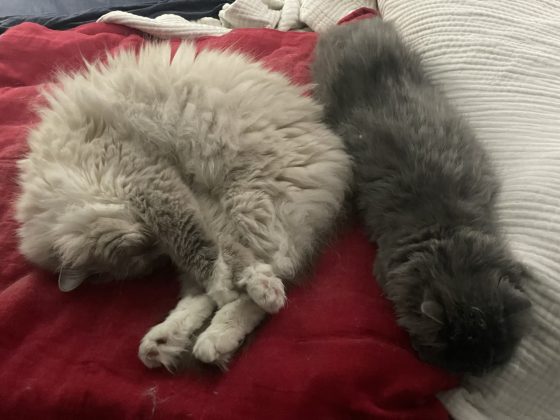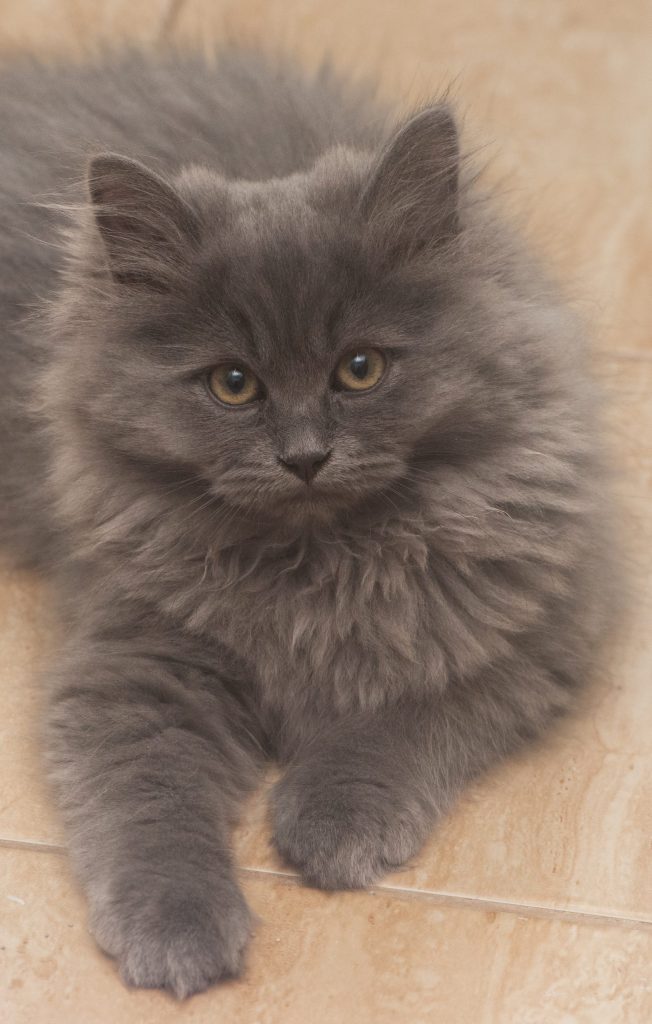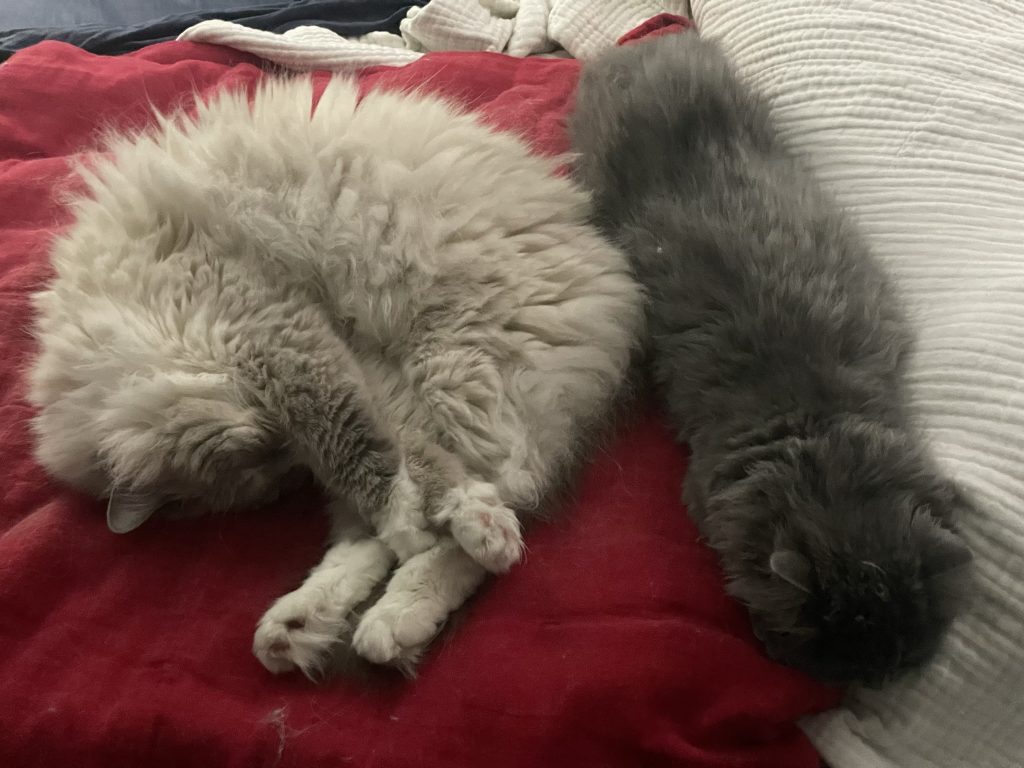
Some of you may remember that my wife and I adopted a new Siberian kitten about a year ago. We named her Tasha.

Tasha’s life as a kitten has been an adventure. She explored the house with boundless energy. Just in her first few weeks with us she was accidentally kicked, stepped on, and even sat on. (All without injury.)
Tasha also turned out to be a fighter. Our Ragdoll cat Beezle loves to play-fight, and he’s always tried to start stuff with our other cats, so it was no surprise that he tried to fight with Tasha. And it turned out Tasha gave back as good as she got. Even as a kitten she would ambush him with a running pounce, hitting him squarely on the side and knocking him over. Beezle had been rambunctious as a kitten himself, so we figure he deserved it. In any case, their battles were always clearly playful, and they actually turned out to be good friends.

Chloe was a different story. We got her from a shelter as a young adult cat, and we suspect that her previous living arrangement may have involved considerable stress, such as living with aggressive dogs or poorly supervised children. As a result, Chloe is our scaredy cat. She hides whenever we have visitors. She’ll sleep in bed with my wife and I all night, but if she encounters me almost anywhere else in the house, she’ll scurry away. She also darts away when either of us coughs or sneezes. This is after living with us for eight years.
When it came to Tasha, however, Chloe didn’t run away. Instead she walked up in full predator swagger and pounced. Tasha quickly learned to respond defensively by hissing loudly and rolling onto her side to bring all four paws into the fight. Unlike the play fights with Beezle, these fights were driven by real animosity, literally sending fur flying.
At first, they were short fights — just a brief encounter with some hissing and throwing of paws. That’s not necessarily a problem. Cats are territorial predators, and scrapping with other cats is not unusual in a multi-cat household, as they establish areas of dominance. Unfortunately, these fights took an ugly turn because Tasha started running away and Chloe began pursuing her to continue the attack. In one heartbreaking incident, Tasha was so scared she peed herself.
From the perspective of cat sociology, such chasing behavior is a bad sign. It’s one thing for two cats to fight each other briefly for dominance, but because Tasha was a smaller creature that ran away, Chloe was starting to treat her like prey. Instead of fighting for dominance with an equal, Chloe was hunting. This is a troublesome behavioral problem. Not only is it dangerous for the “prey” cat, it’s also not something the cats can work out by themselves.
To prevent these kinds of problems, we normally have a process for progressively introducing a new cat to the household. It begins with isolation in the master bath, then timeshared access to the master bedroom, followed by supervised togetherness for feeding and play, leading eventually to freedom. This can take a week or two, depending on the cats. For some reason, however, it hadn’t worked this time.
So we reset to day zero and went through the whole process again. And we got the same result, complete with another peeing incident.
We realized we had to repeat the process a third time but really take things slowly. We started with the overlapping access program, with either Tasha or Chloe confined to the bedroom. We’d switch them out once or twice a day, generally alternating which cat got to sleep with us at night. We did that for months.
At some point during this time, we took Tasha to the vet to get spayed. She was not happy about this. She especially didn’t like the Elizabethan collar — the protective cone vets put around pets’ heads to keep them from gnawing at surgical wounds. She managed to remove it almost immediately. We tried putting it back on a couple of times, but she just kept taking it off, finally losing it under the bed. The very next day after her surgery, she escaped from her room and got into a fur-flying fight with Chloe. Fortunately, that didn’t reopen her surgical wound. She soon recovered, and we figured that was the end of her surgical adventures…
(Imagine ominous musical cue playing here.)
After a little while, we started leaving the bedroom door open, but blocking it off with a special cat gate. (A cat gate is a lot like a baby gate, except it’s five feet tall, because cats can jump a lot higher than babies.) That way Tasha and Chloe could see each other, and even swat each other through the bars, but neither of them could force the other into a fight. For the last two months, we brought all three cats together for feeding time. At first we fed them on opposite sides of the gate, but later we brought them together just outside the bedroom under careful supervision.
Thankfully, this time the process worked. Tasha and Chloe still get into occasional confrontations, but they are just normal cat scraps. Chloe is sometimes the aggressor, but more often what happens is that Tasha hisses defensively when Chloe approaches. If distracted, they will pass each other up without any sign of animosity. This, we agreed, was is good enough to end the separation.
We’d like to think our careful approach to bringing the cats together was successful, but realistically it could also be that Tasha just grew up into a fairly large cat, and Chloe no longer feels confident going after her. In any case, Tasha’s fighting adventures appear to be over.
Unfortunately, Tasha’s biggest adventures were yet to come.
I’ll talk about that in Part 2.
Update: Part 2 is up.

[…] part one, I recounted Tasha’s first full year with us, filled with accidents, surgery, and lots of […]